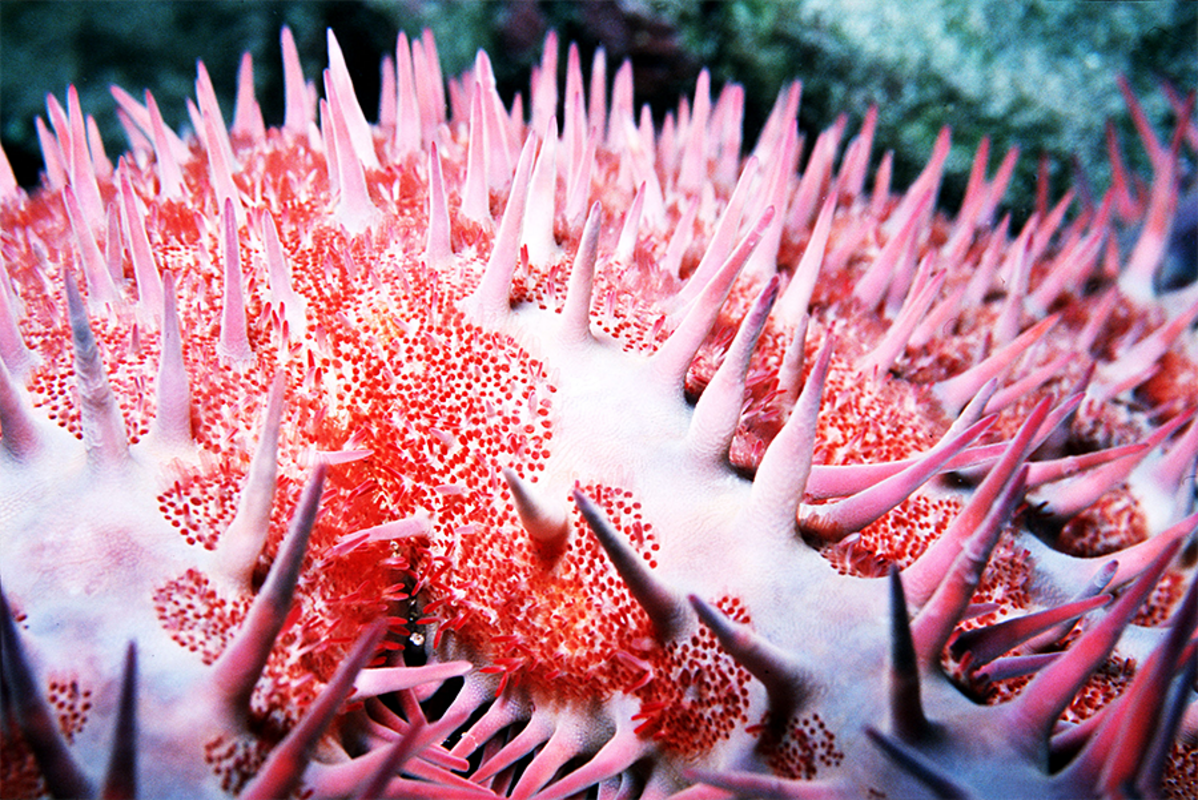Scientists find an easier way to kill coral-eating starfish. An improvement?
Loading...
Scientists have come up with an inexpensive way to kill a starfish considered problematic to the Great Barrier Reef, but not everyone is happy about it.
Acanthaster planci, known as the , is one of the world's largest sea stars. It preys on coral, and was once hailed as a hero of the reef for policing the fastest growing corals, thus promoting biodiversity by helping slower-growing coral species to form colonies.
But now the species is experiencing cyclic population explosion, one that seems to occur every 17 years.
“It has been estimated there are between 4 and 12 million of the starfish on the Great Barrier Reef alone and each female produce[s] around 65 million eggs in a single breeding season,” according to a statement by Lisa Boström-Einarsson, lead author of ��(���䱫).
“They managed to kill around 350,000 last year with two full-time boat crews. While it would take an insane effort to cull them all that way, we know that sustained efforts can save individual reefs.”
As Ms. Boström-Einarsson explains, previous efforts to reduce the starfish population relied on injecting 10 to 12 milliliters of ox bile into the animals. "It’s expensive, requires permits, and has to be mixed to the right concentration," she says.
But this week JCU scientists announced a breakthrough: They replaced the ox bile with vinegar.
"We used 20 ml of vinegar," said Boström-Einarsson, "which is half the price and can be bought off the shelf at any local supermarket.”
Using vinegar is certainly kinder to oxen, but some critics are still expressing concerns about the rights of the sea stars.
“Many ‘conservationists' fixes’ involve harm as they try to recreate a particular time in nature now decimated by, usually, human activity,” writes PETA President Ingrid Newkirk, in an email interview in which she condemns the practice.
“There are always other solutions – creative people are clothing the world with recycled plastic, building artificial reefs from cement blocks, rocks, even old boats such as the Thunderbolt and The Duane, and more,” Ms. Newkirk says. “Where there's a will, there's a way, and easy ‘solutions’ to problems – and cruelly killing starfish who are trying to eke out an existence are as unacceptable as blasting reefs with dynamite to catch fish. Both are cheap, dirty, destructive, and unimaginative.”
Marine Biologist voices a similar opinion, saying in an interview, “Scientists should be looking for which hidden bio control, such as a predator or disease that has gone missing in the environment, before culling the creatures.”
Mr. Galante adds, “Before we start tinkering with the chain of events that can come crashing down like some giant Jenga tower, we need to be sure we have those kinds of answers. Human interference can have much greater long-term impact on the ecosystem than we initially understood or intended.”
published in the Proceedings of the National Academy of Sciences argues that the damage to the reefs is caused by “rising seawater temperatures, ocean acidification, water pollution from terrestrial runoff and dredging, destructive fishing, overfishing, and coastal development” which have led to population outbreaks of the starfish.
“Thus, reducing [Crown of Thorns starfish] populations, by improving water quality and developing alternative control measures, could prevent further coral decline and improve the outlook for the Great Barrier Reef. Such strategies can, however, only be successful if climatic conditions are stabilized, as losses due to bleaching and cyclones will otherwise increase,” the report concludes.





